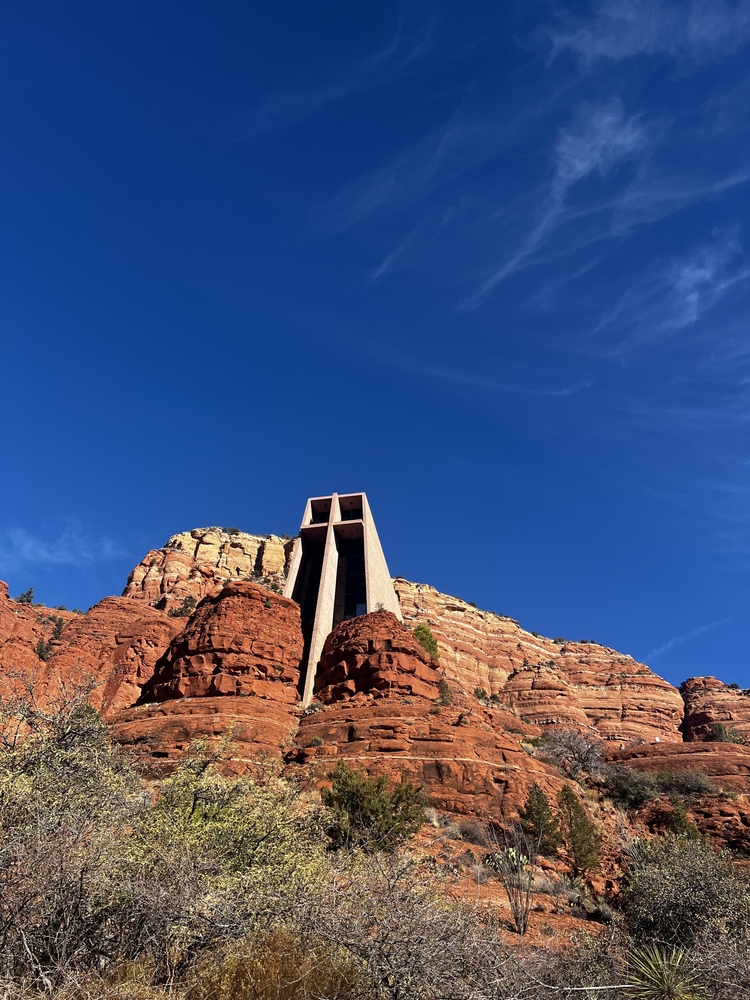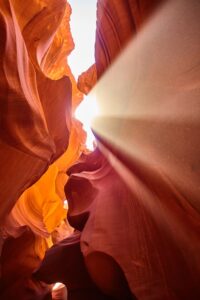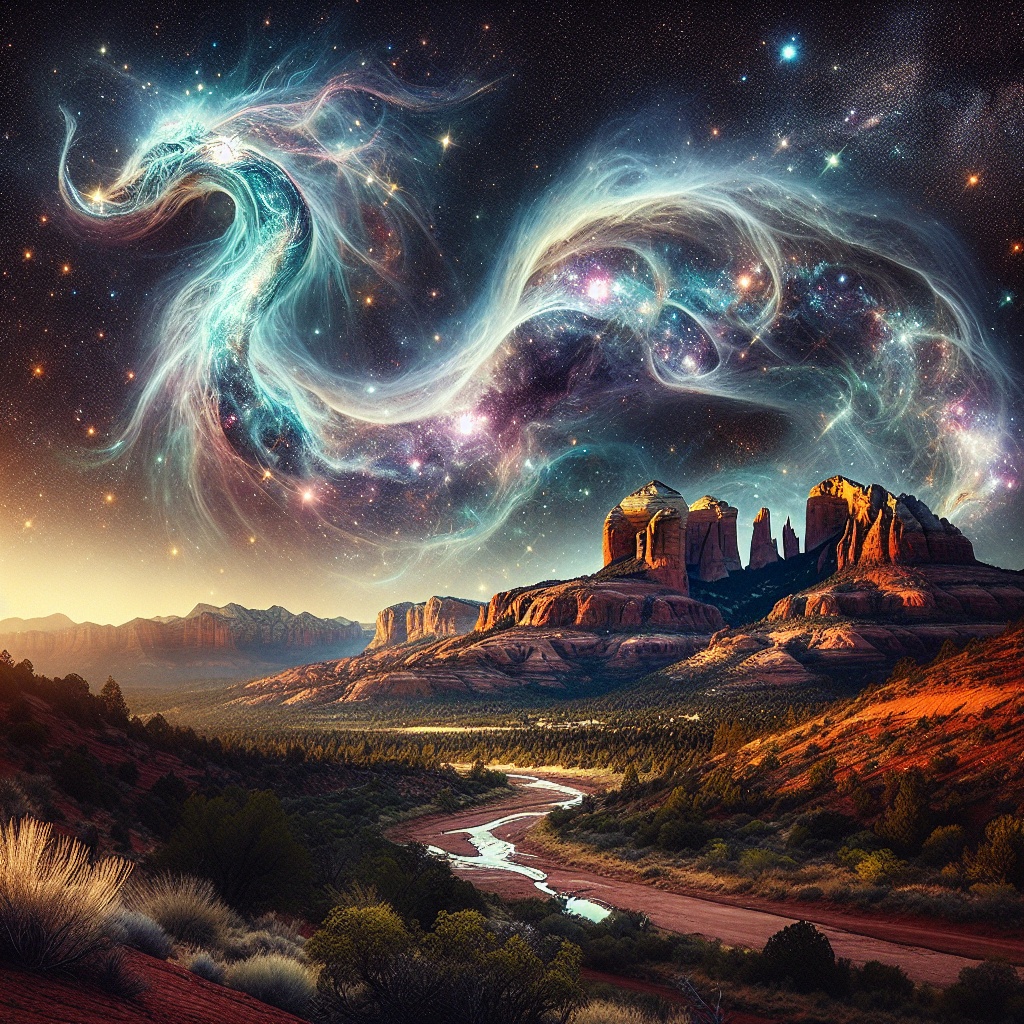Sedona, AZ — There are places on this Earth that seem to breathe with a different rhythm, where the veil between the material and the mystical grows thin. Sedona, Arizona is such a place. Not merely a dot on a map, not simply a town in the high desert—it is a living temple, an energetic chalice resting in the lap of red rock cathedrals, carved by time, lifted by spirit, and called forth by destiny. To speak of Sedona is to speak in the language of vibration, geometry, and soul.
Long before modern seekers set foot on its rust-red trails, the land we now call Sedona was held sacred by Native American tribes, including the Yavapai, Apache, and Hopi. To them, this land was not just beautiful—it was alive, humming with power, a place for vision quests, healing ceremonies, and communion with the unseen. Ancient cliff dwellings and petroglyphs still whisper their stories in the canyons. These people understood what science now attempts to quantify: that Sedona is more than picturesque—it is energetic.

It rests, many believe, on a confluence of powerful Earth energy lines, sometimes called ley lines—geometries that stitch together the spiritual heart of the planet. In this grid, Sedona is seen as a nodal point, linked energetically to other high-frequency locations like Machu Picchu, the Great Pyramids of Egypt, Stonehenge, and the Himalayas. The red rocks are not random; they are crystalline sentinels, iron-rich conductors amplifying energy like tuning forks. And within this resonant bowl lie the vortexes—Airport Mesa, Cathedral Rock, Boynton Canyon, and Bell Rock—each offering a slightly different frequency: masculine, feminine, balancing, and healing. You don’t visit a vortex. You enter into it, as one might enter into prayer or song.
In the 1950s and ’60s, Sedona was still a sleepy ranching town, known mostly for Western films and sun-drenched skies. But by the 1970s, as spiritual consciousness surged and the New Age movement expanded, something stirred. Word spread among shamans, astrologers, energy workers, yogis, metaphysicians, and those longing for a deeper encounter with truth. They came in trickles, then waves, drawn by visions, dreams, or some subtle magnetism they couldn’t name. And here, under wide skies and beside whispering creeks, they found what they were looking for. Sedona became a sanctuary for seekers—not because someone marketed it that way, but because the land called them.

The transformation was organic. One spiritual teacher opened a small meditation center. Another offered crystal healing. Others began guiding sacred hikes, hosting drumming circles, or teaching the tarot. Soon, the metaphysical community flourished, sprouting bookstores filled with esoteric texts, galleries overflowing with visionary art, and healing centers that offered everything from reiki and past-life regression to sound therapy and galactic downloads. Walk down Jordan Road today and you’ll find more than shops—you’ll find mirrors for the soul, oracles of light.
But Sedona isn’t just metaphysical. It is a muse for artists, writers, and creators of all stripes. Its color palette is nature’s finest—red stone cliffs against turquoise sky, golden cottonwoods beside silver streams. Light behaves differently here, diffused through a prism of sacred geometry. The town soon evolved into one of the Southwest’s premier art destinations. Galleries, sculpture gardens, plein air festivals, and studios now line its streets like offerings. Creativity is contagious here. It comes through in brushstrokes, in songs, in the way people speak about the unseen as if it’s already known.
 Why does Sedona attract such people? Because the world is aching for meaning, for peace, for something more real than headlines and heartbreak. In Sedona, the rush quiets. The ego softens. Here, people remember what it feels like to belong—not to a crowd, but to the Earth, to spirit, to something ancient and enduring. Here, strangers become soul family. You don’t have to be a master yogi or seasoned shaman. You just have to arrive open. The land does the rest.
Why does Sedona attract such people? Because the world is aching for meaning, for peace, for something more real than headlines and heartbreak. In Sedona, the rush quiets. The ego softens. Here, people remember what it feels like to belong—not to a crowd, but to the Earth, to spirit, to something ancient and enduring. Here, strangers become soul family. You don’t have to be a master yogi or seasoned shaman. You just have to arrive open. The land does the rest.
Children laugh in Oak Creek’s cool waters. Couples meditate hand in hand on sun-warmed boulders. Elders sit in silence, faces lit by the low sun, remembering who they are. Even the skeptics are softened, their breath deepened by the scent of juniper and rain. There is a reason the world calls Sedona a spiritual mecca. It is because the land remembers who we are—even when we forget.
So come. Walk the labyrinths. Join a fire ceremony. Paint what you see in your dreams. Let the wind tell you stories older than your name. Sedona isn’t a place to visit. It’s a place to become.
Because in the end, Sedona doesn’t change you. It reveals you. And that, my friend, is the beginning of everything.


